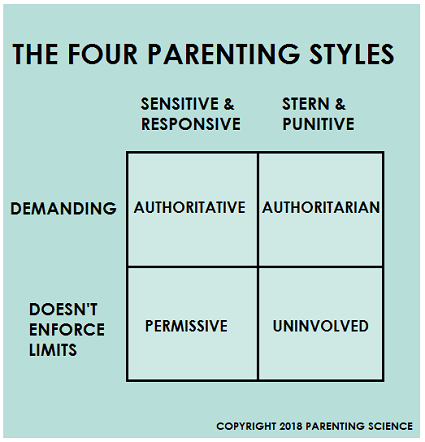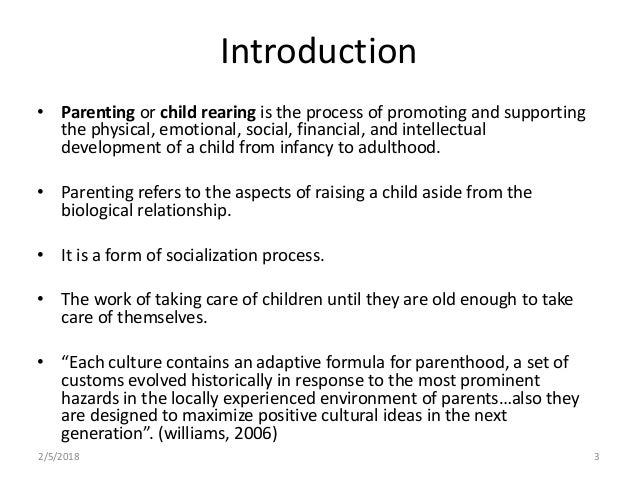For the West African Benin however this isnt the case. Child rearing practices in all cultures are designed to produce adults who now the skills norms values perceptions beliefs and behavior patterns of their society.

10 Child Rearing Practices Ideas Child Rearing Practices Child Rearing Cultural Differences
It is the profound cultural differences brought about by child-rearing practices alone that make them so different.

. But the way a parent raises a child to reach the apparently universal goal of becoming an upstanding member of their community is largely based on cultural norms. Child-Rearing Practices in Different Cultures. It is the secret and foundation to successful.
Produce adults who are submissive to the cultural content. Produce children who know all cultural content at an early age. The unique cultural influences children respond to from birth including customs and beliefs around food artistic expression language and religion affect the way they develop emotionally socially physically and.
Interdependence most all cultures in the world can be divided into two basic patterns of child rearing though notable differences between cultures that share the same pattern do occur. And different societies have evolved varied practices that they have each come to consider as necessary for healthy child rearing. Child-rearing practices vary in such areas as methods of discipline expression of affection and degree of permissiveness.
The BEST child rearing strategy for temperamentally inhibited toddlers is to. Child fosterage is meant to help African households deal with adult. Parenting practices around the world are diverse and not all about attachment.
Get involved in your childs life. Most parents would agree that parenting is extremely complex and challenging. -push the child to excel.
In the individualistic culture of the United States parents tend to be noncoercive democratic and permissive in their child-rearing techniques. These cultural practices seem designed to mould the growing child to fit in with the least amount of friction into a communitys specific habitat while also helping it learn to abide by the norms in a particular society. In a vast majority of cultures children grow up with their biological parents.
The practices are an assurance of the future success of your little angel. A key approach towards addressing the over-representation of Aboriginal and Torres Strait Islander children in the child protection system is to develop and build on their knowledge and understandings of Aboriginal and Torres Strait Islander family and community structures and child-rearing practices. All parents can agree that the purpose of child rearing and discipline is to help a kid become a successful prosocial member of society.
A pattern of raising children that is specific to a particular society subculture family or period in cultural history. Passed down to children from adults through enculturation. Child-rearing practices in all cultures are designed to.
There are two fundamental patterns in child-rearing individualistic and collectivist explains communication expert Marcia Carteret on Dimensions of Culture. One of the most effective and efficient tips of child-rearing is to get involved in your kids life. Groups share norms- what is.
Individualistic cultures emphasize self-sufficiency while collectivist ones emphasize the dependence of individuals on the group of which they are a part. Its culture and thus child-rearing practices with it. Understanding Chinese Cultural Child-Rearing Attitudes and Practices Created Date.
In places like Ghana Sierra Leone Liberia and Nigeria children are sent away to be raised by relatives or non-relatives. In collectivist cultures such as Asian and Arab societies parental practices tend to be more authoritarian restrictive and controlling. Allow adults to work as teachers only during a childs early period of development.
Here are some of the practices to follow. Two Fundamental Patterns in Child Rearing Based on attitudes towards autonomy vs. Culture can have a powerful effect on parenting styles and practices according to the Centers for Disease Control and Prevention.
Im also sharing a few that I was raised with and that I. Produce adults who know the cultural content. Zhang Jing PhD Understanding Chinese Cultural Child-Rearing Attitudes and Practices 2014NYS Child WelfareChild Protective Services Training Institute.
I asked other family travel and cultural bloggers to share their experiences and customs when it comes to child rearing practices in different cultures. When you apply a cultural lens to every structured decision-making. Racial differ-ences do not separate them.
-force the child into stressful social situations. A culture of ignorance is perpetuated through child-rearing practices regardless of nationality skin color or geographic loca-tion. For example a culture in which the father is expected to be a stern disciplinarian.
Parenting is an activity rooted not only in ones own childhood experiences but in the culture one grew up and lives in. 162017 82038 AM. There can be considerable disapproval across two such fundamentally different value systems.
Child-rearing practices contribute greatly to the overall development of your child subsequently. Depending on where a child is born on the globe the cultural norms. Cultural background gives children a sense of who they are.
American parents embrace the former. -insulate the child from all stress. 10 Interesting Child Rearing Practices in Different Cultures.

Child Rearing Practices In Different Cultures

Parenting Styles An Evidence Based Cross Cultural Guide

Child Rearing Practices Attitudes And Cultural Differences Nova Science Publishers

Cultural Practices In Child Rearing A Continuum Download Table

7 Interesting Child Rearing Practices In Different Cultures Explore With Tori

Contrasting Parental Goals In Child Rearing Practices Download Table

Parenting Practices Of Different Cultures Different Culture Different Parenting Style

B El Ed Child Development Topic Child Rearing Gender Stereotype Play Of Pre Schooler Beled In
0 comments
Post a Comment